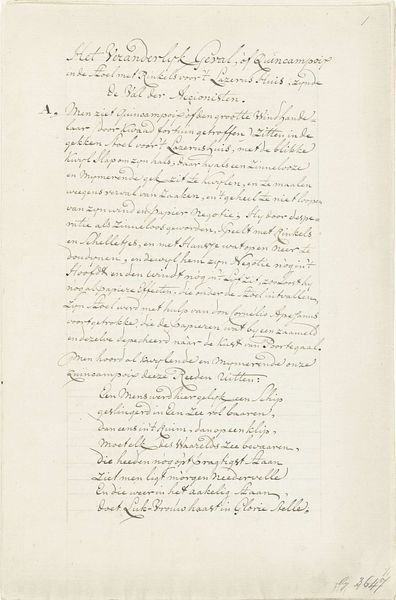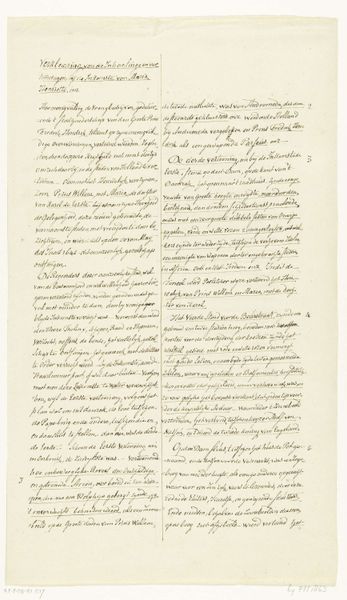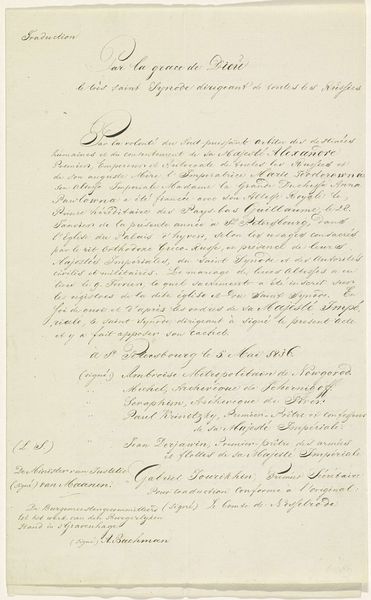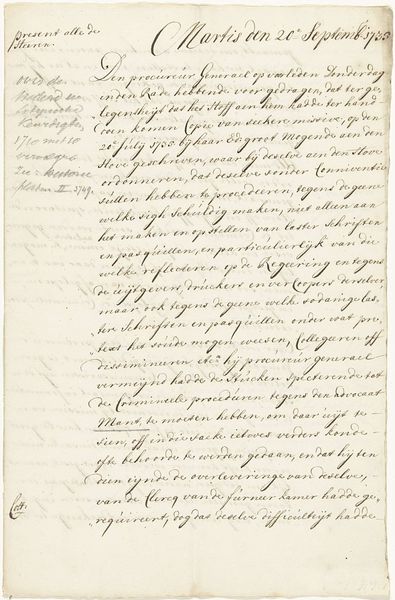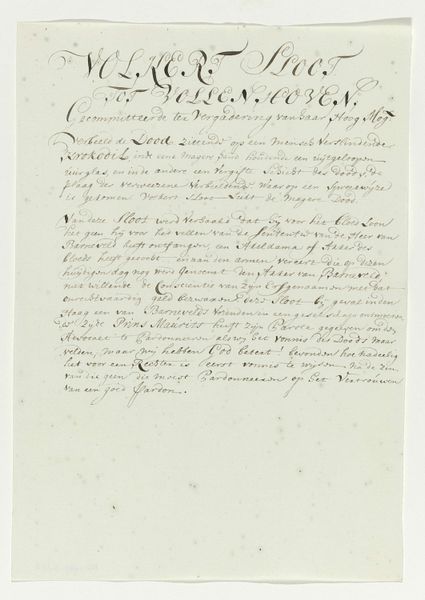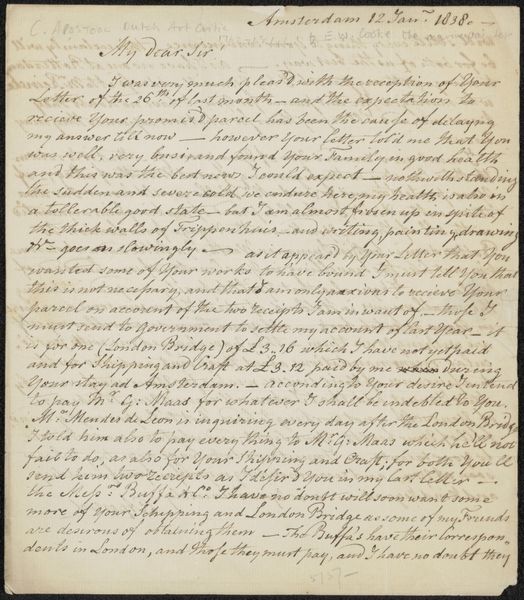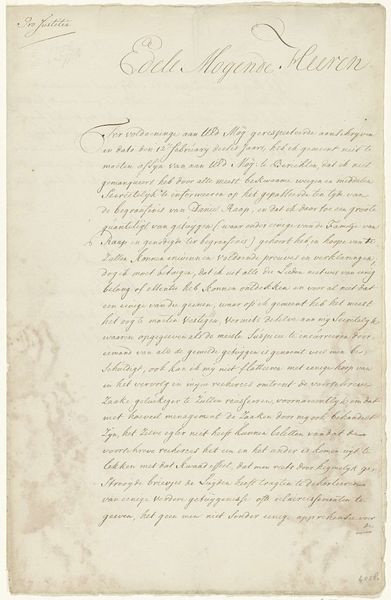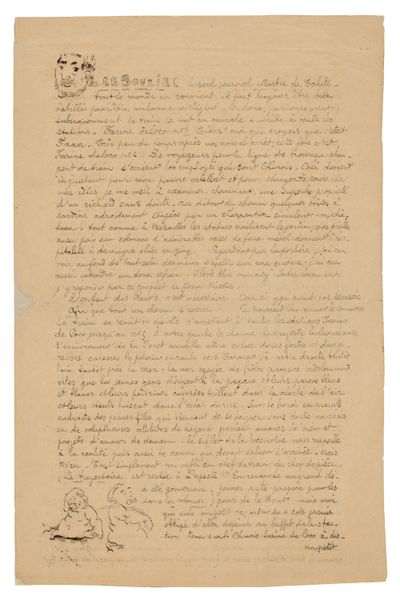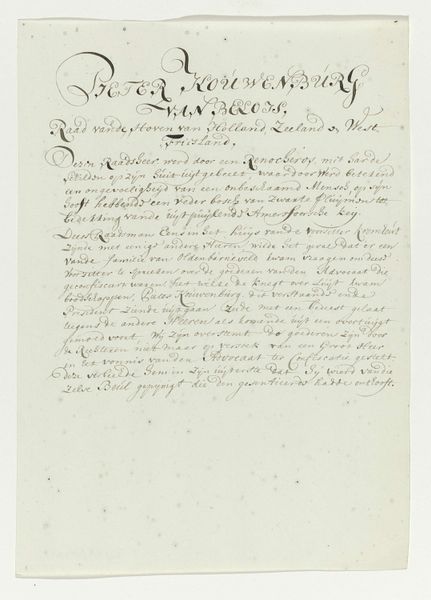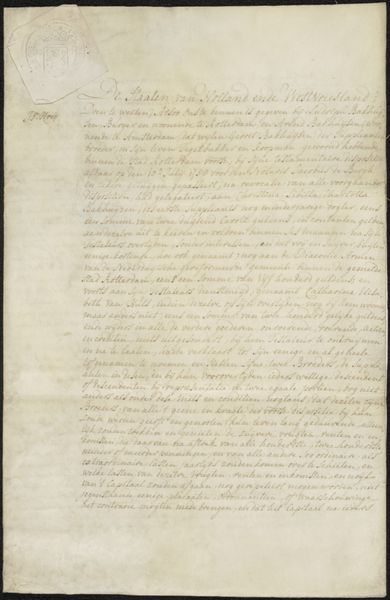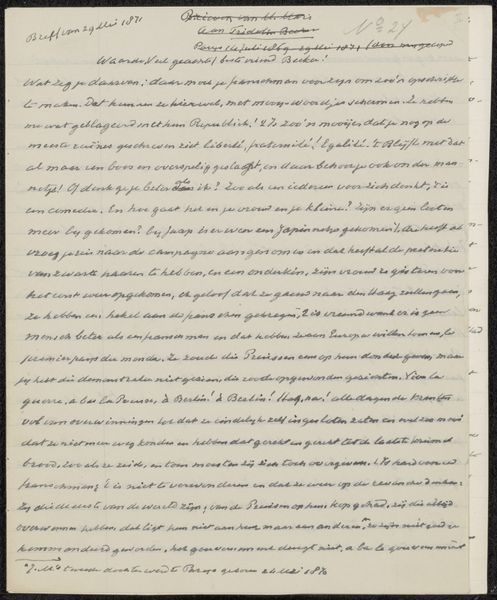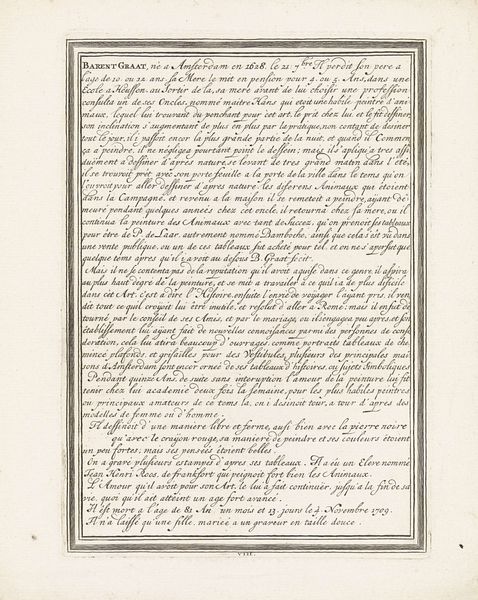
Verklaring bij de tekening Quincampoix of de grote Wind en Koolverkoper, 1720 1720
0:00
0:00
anonymous
Rijksmuseum
drawing, paper, ink
#
drawing
#
dutch-golden-age
#
paper
#
ink
#
calligraphy
Dimensions: height 387 mm, width 250 mm
Copyright: Rijks Museum: Open Domain
This hand-written document, made in 1720 by an anonymous author, refers to ‘Quincampoix, or the Great Wind and Cabbage Seller’ and gives an explanation of the image in great detail. Its subject is John Law, a Scottish economist who controlled the French economy for a time. The image, to which this is a key, is a satire on the Mississippi Bubble, a financial scheme promoted by Law that encouraged speculation and led to widespread financial ruin in France and elsewhere. The text explains, for example, that the bubbles represent those who are fools or crazy, the large cabbage represents a willingness to sell everything, and the columns refer to many promises. Documents such as this one, now preserved in the museum, provide vital evidence for historians. They allow us to understand how people at the time viewed these events. By looking closely at such cultural and institutional histories, we can gain a deeper understanding of the intricate relationship between art, society, and power.
Comments
No comments
Be the first to comment and join the conversation on the ultimate creative platform.
